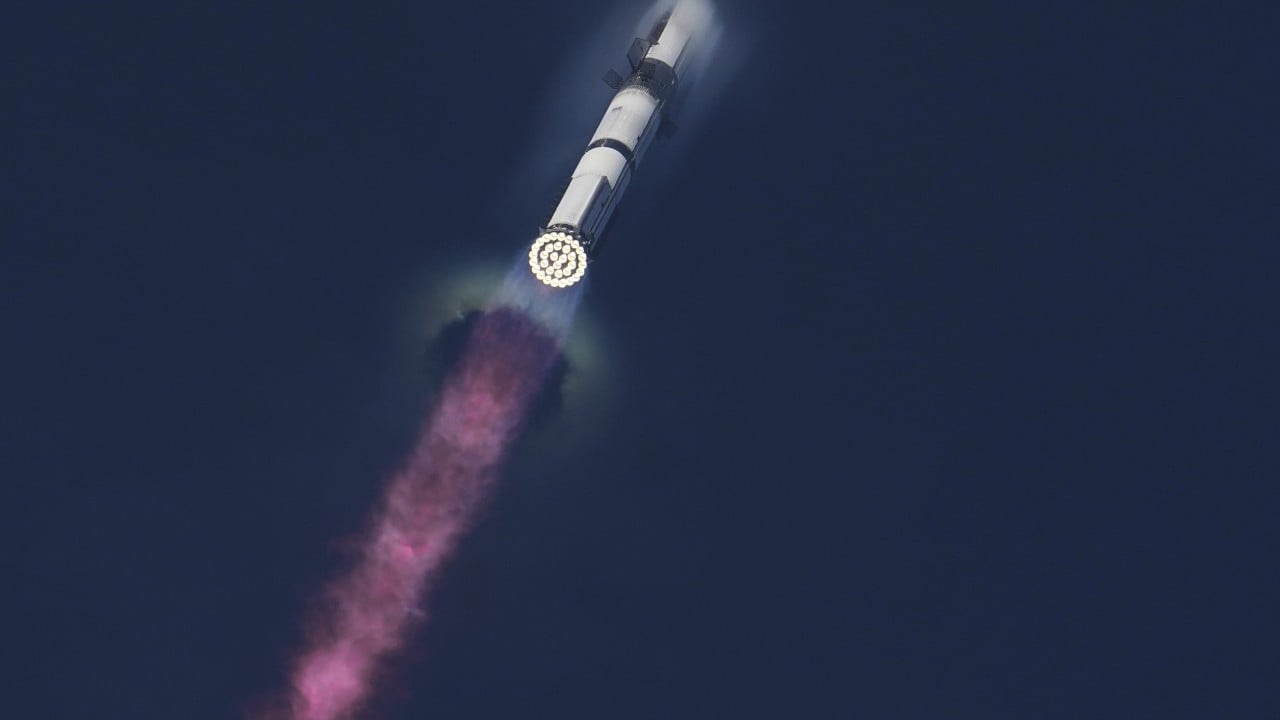SpaceX’s Starship megarocket roared into the skies Tuesday on its 10th test flight, turning in a strong performance after a series of fiery failures had begun to cast doubt on its future.
Advertisement
Towering 123 metres (403 feet), Starship is the most powerful launch vehicle ever built and key to founder Elon Musk’s vision of carrying humanity to Mars, as well as Nasa’s plans to return astronauts to the moon.
The stainless steel colossus blasted off from the company’s Starbase in southern Texas at 6.30pm local time, greeted by loud cheers from engineering teams, as seen in a live webcast.
A few minutes into launch, the first-stage booster known as Super Heavy splashed down into the Gulf of Mexico, triggering a sonic boom on its way. Unlike other recent tests, SpaceX opted not to attempt a catch with the giant “chopstick” arms of the launch tower, instead testing how it would perform if an engine cut out.
Attention then shifted to the upper stage – also known individually as Starship and intended to one day carry crew and cargo – to demonstrate its capabilities as it soared into space.
Advertisement
For the first time, SpaceX was able to successfully deploy eight dummy Starlink internet satellites, with onboard cameras beaming back live views of a robotic mechanism pushing each out one by one.

